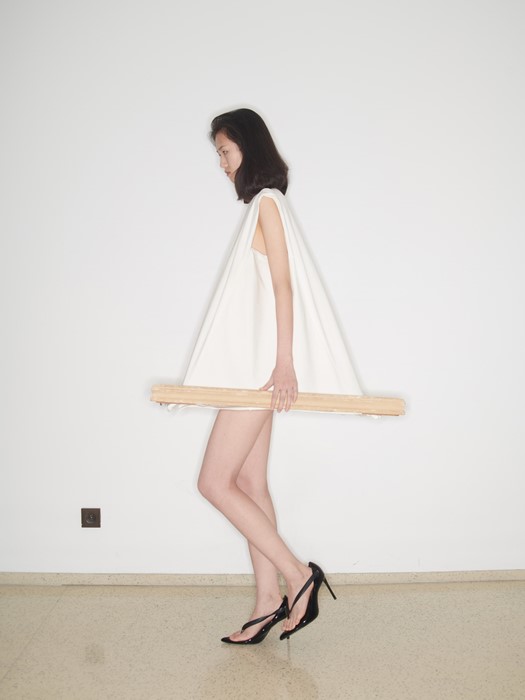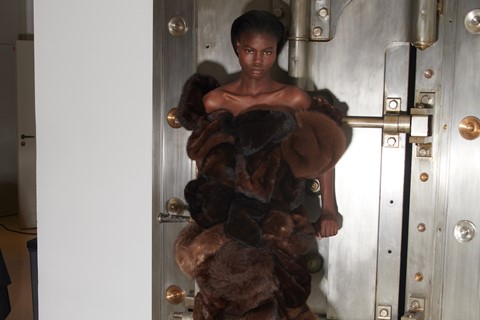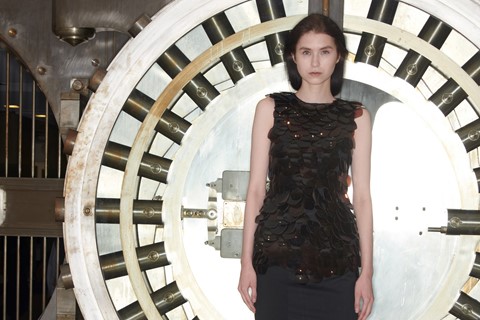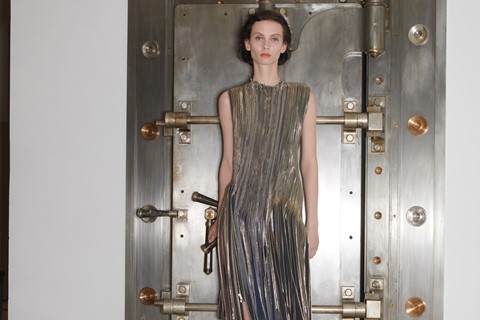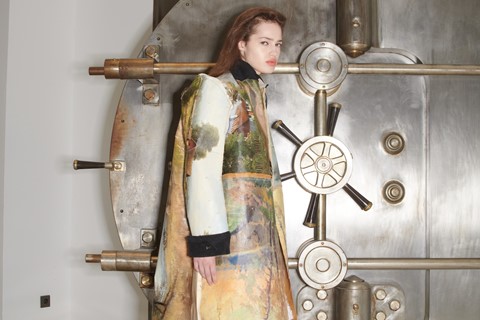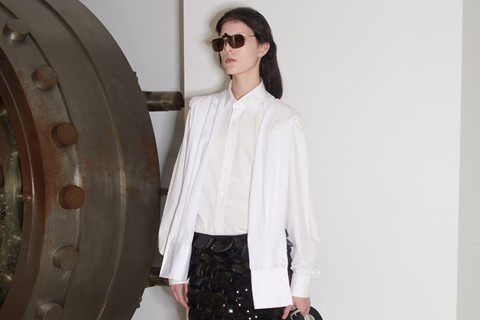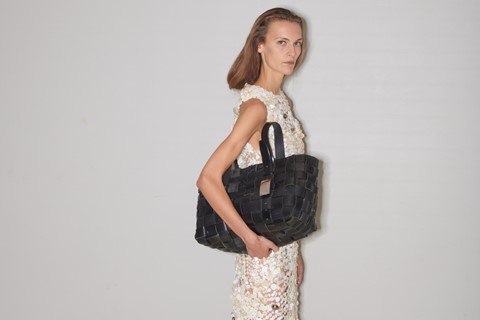With a ferocious respect for the lives of our belongings, Swedish designer Ellen Larsson unpacks the sustainable ethos behind her LVMH Prize-winning brand
- Who is it? Hodakova is the LVMH Prize-winning brand of Swedish designer Ellen Larsson
- Why do I want it? Cutting-edge, luxurious designs made entirely from second-hand, deadstock, and vintage materials
- Where can I find it? Hodakova is available through the brand’s own website, as well as other international stockists such as Dover Street Market and SSENSE
Who is it? From an early age, Sweden-born designer Ellen Larsson was encouraged to dream of alternate lives for the objects and clothing that surrounded her. “My mum was always transforming everything to create a life that just felt safe,” she recalls. “A lamp changed pattern, a chair got new fabric, a dress became a skirt. We were always stitching everything.” After high school, she studied sculpture and painting but realised that her work kept coming back to the body. As she pivoted to fashion design – and then launched her label Hodakova in 2021 – her ferocious respect for the lives of our belongings became her North Star.
Larsson’s interest in clothing is first and foremost as a dialogue. “I think understanding yourself and everything around you comes through communication,” she says, “and your clothing is the first line of this.” Her father, who served in the military, showed her the non-verbal power of dress: how the manner in which we care for our clothes reflects our sense of self and how we occupy space in the world. The consistent aesthetic of Hodakova – which plays on tropes of uniform, from the horse-riding apparel of her youth to formal office attire – is conceived of as a way to “highlight confidence in your choices and to be proud of who you are,” she explains. “It’s about accepting yourself because that’s what trends prey on. Insecurity.”
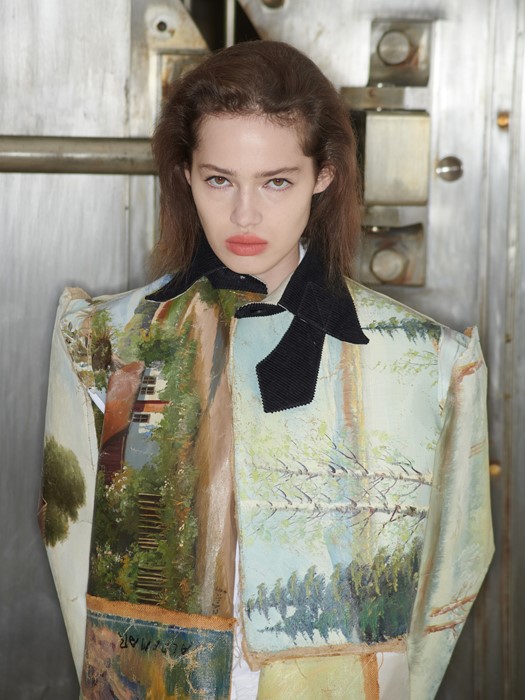
Hodakova’s Spring/Summer 2025 collection, presented as part of Paris Fashion Week’s official calendar, expanded on the theme of communication: it was an investigation into memory and how it is passed on. “I wanted to understand how we’ve kept memories. First through speech, writing, paintings, and now via photographs and iCloud,” Larsson says. “Ultimately, it comes back to a physical communication that honours memory and storytelling.” The surrealist silhouettes (which were styled by Lotta Volkova) – upturned dresses belted at the neckline, art frames as hemlines, equestrian boots turned into miniskirts – dually referenced memories of her childhood spent arts-and-crafting and riding horses, as well as the material forms in which she remembers it by. A video installation from Lucca Lutzky broadcast the runway show in real time to propagate a sense of closeness amongst the attendees.
Why do I want it? If, in recent years, upcycling has been misunderstood as a retro, thrifted aesthetic, Larsson proves with Hodakova how it can be a luxurious, forward-thinking approach to craftsmanship. Take, for example, her now-signature dresses and handbags: weaved from second-hand belts, they are curiously modern in their structured, streamlined silhouettes. In other designs, zippers are refastened to follow bodily form in elegant skirts, and waistbands layered into sculptural gowns. The basis of her garments, however, are not just objects repurposed from within fashion: for her most recent collection, landscape paintings were removed from frames to be recrafted as textiles. In each of these reimaginings, Larsson hints at the material’s previous lifelines and then breaks free of their commonplace affectations to open a world of design possibilities.
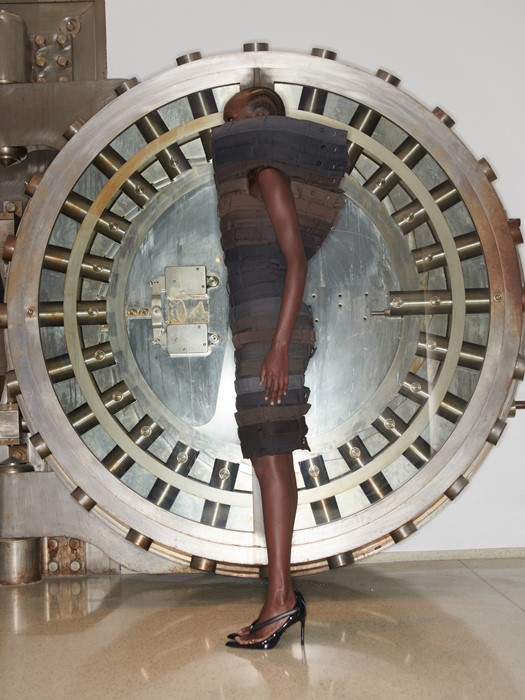
One of the biggest challenges of working with deadstock, vintage, or upcycled resources is scalability. But in being steadfast in her dedication to sustainable practice, Larsson has succeeded in innovating a global infrastructure (Hodakova is currently represented in 18 countries) of sorting, defining, and then cleaning materials for reuse. “It has been my rule from the start,” she affirms. “Everything has to be transformed from discarded pieces according to a system that ensures both similarities and uniqueness in the same piece.” In doing so, Larsson challenges the idea that what is reproducible must be uniform – the true beauty lies in the small differences. “I mean, a white shirt is a white shirt,” she says, “it will always be similar, even with small, unique details in each garment.”
Earlier this year, Larsson won the LVMH prize and hopes to use the support to develop AI technologies which will help with the sorting of textiles and then predict their viability for use within her designs. “It’s a very exciting project where we can make the sustainable process so much more effective,” she explains. “The sorting of second-hand and vintage pieces is okay, but it’s not on the universal level that it needs to be.”
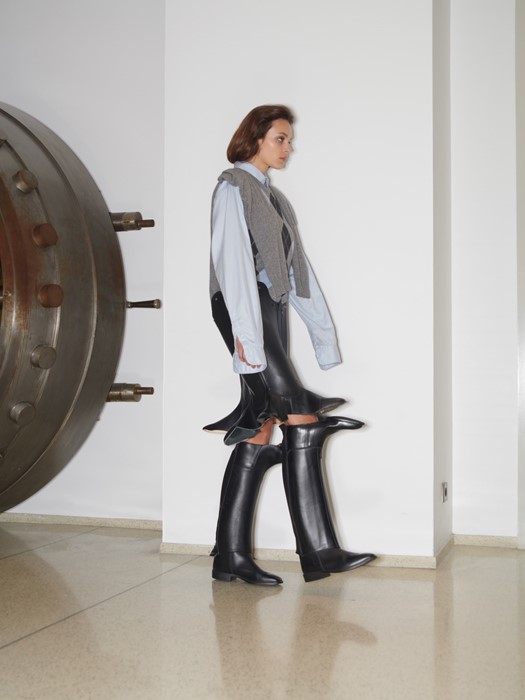
But despite the attention the prize has garnered her, Larsson will continue to base Hodakova in Stockholm, away from the noisy fashion circles of cities like Paris and London. “It’s really nice to be in a place where you can have a good life, be in nature with your dog, have dinners with friends and family,” she reflects. “Most importantly, to be in a place where you can focus and listen to your intuition.”
Where can I find it? Hodakova is available through the brand’s own website, as well as other international stockists such as Dover Street Market and SSENSE.
